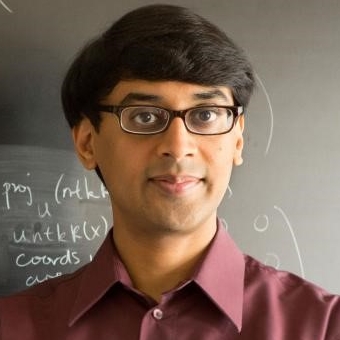Links to external sources may no longer work as intended. The content may not represent the latest thinking in this area or the Society’s current position on the topic.
Srinivasa Ramanujan: in celebration of the centenary of his election as FRS
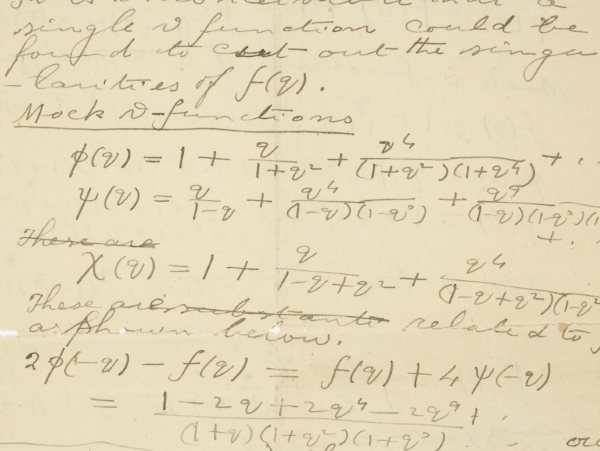
Scientific discussion meeting organised by Professor Ken Ono, Professor George E Andrews, Professor Manjul Bhargava and Professor Robert C Vaughan FRS.
This meeting is a celebration of the 100th anniversary of Ramanujan’s election as FRS. Distinguished scientists will speak on Ramanujan’s mathematics and its extraordinary legacy across many fields: Computer Science, Electrical Engineering, Mathematics, and Physics. The emphasis will be on recent, cutting edge research. The primary goal is to have leaders from these four important threads interact, share ideas, and develop cross-disciplinary collaborations.
The schedule of talks and speaker biographies are available below. Recorded audio of the presentations are available on this page.
Attending this event
This meeting has taken place.
Enquiries: contact the Scientific Programmes team
Organisers
Schedule
Chair
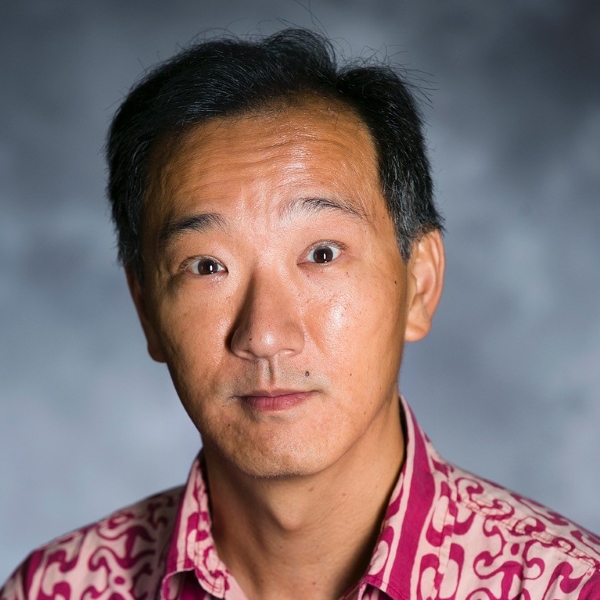
Professor Ken Ono, Emory University, USA

Professor Ken Ono, Emory University, USA
Ono is the Asa Griggs Candler Professor of Mathematics at Emory University and Vice President of the American Mathematical Society. His contributions include several monographs and more than 160 research and popular articles in number theory, combinatorics and algebra. He earned his Ph.D. from UCLA and has received many awards for his research, including a Guggenheim Fellowship, a Packard Fellowship and a Sloan Research Fellowship. He was awarded a Presidential Early Career Award for Science and Engineering (PECASE) by Bill Clinton in 2000 and was named a Distinguished Teaching Scholar by the National Science Foundation in 2005. He is also a member of the US National Committee for Mathematics and the National Academy of Sciences. He was also an Associate Producer of the film “The Man Who Knew Infinity”, the Hollywood biopic about Srinivasa Ramanujan which starred Jeremy Irons and Dev Patel.
| 09:00 - 09:05 | Welcome by the Royal Society | |
|---|---|---|
| 09:10 - 09:40 |
Living with Ramanujan for forty years
Beginning in May 1977, the speaker began to devote all of his research efforts to proving the approximately 3000 claims made by Ramanujan without proofs in his notebooks. While completing this task a little over 20 years later, with the help, principally, of his former and then current graduate students, he began to work with George Andrews on proving Ramanujan's claims from his "lost notebook." After another 20 years, with the help of several mathematicians, we think we have found proofs of all the claims in the lost notebook. But one entry, connected with the famous Dirichlet Divisor Problem, remained painfully difficult to prove. In analogy with G.N. Watson's retiring address to the London Mathematical Society in November 1935 on the "final problem," arising from Ramanujan's last letter to Hardy, we have called this entry the "final problem," because it was the last entry from the lost notebook to be proved. Early this summer, a proof was finally given by Junxian Li, who just completed her doctorate at the University of Illinois; Alexandru Zaharescu (her advisor); and myself. We will discuss the identity comprising the "final problem" as well as other highlights from our 40 year investigation of the (earlier) notebooks and lost notebook. 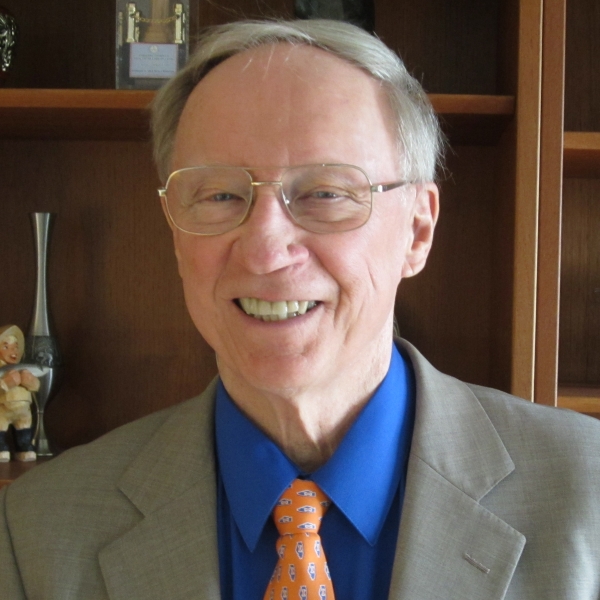
Professor Bruce Berndt, University of Illinois, USA

Professor Bruce Berndt, University of Illinois, USABruce Berndt has been on the mathematics faculty at the University of Illinois at Urbana-Champaign since 1967. While on sabbatical leave at the Institute for Advanced Study in Princeton in 1974, he became keenly interested in the work of Ramanujan, primarily through two papers by Emil Grosswald. In 1977, Berndt began to edit the earlier notebooks of Srinivasa Ramanujan. Earlier notes by G.N. Watson and B.M. Wilson from their attempts in the late 1920's and early 1930's to edit the notebooks were very helpful. By "editing," we mean providing proofs for the over 3300 formulas and claims in these notebooks, which arise from approximately the period 1904--1914. This task was completed in 1998 with the fifth volume published by Springer. Beginning in the late 1990's, Berndt and George Andrews began "editing" Ramanujan's lost notebook. Their fifth and final volume on the lost notebook was published by Springer earlier this year. Berndt and R.A. Rankin have also published two volumes with the American Mathematical Society on Ramanujan's correspondence and essays about his work. |
|
| 09:40 - 09:55 | Discussion | |
| 09:55 - 10:25 |
Ramanujan's Lost Notebook in Five Volumes: Future Directions
Ramanujan composed two Notebooks of his discoveries prior to coming to Cambridge in 1914. Upon his return to India in 1919, he filled another 100 plus pages with formulas discovered during this last year of his life. The latter is referred to as his Lost Notebook; it lay unexamined until 1976. Bruce Berndt devoted 5 volumes (published by Springer) to the mathematics contained in the original two Notebooks. Four volumes have already been published on the Lost Notebook explicating the formulas contained in the Lost Notebook. The fifth and final volume is in press. Ramanujan left no proofs of the thousands of results in these notebooks. It is important to note a couple things concerning the Notebooks. First, through the efforts of many currently active researchers, every formula in the Notebooks has now been proved (or in a minimally few cases, disproved). However, there are many results that have great importance currently (e.g. assertions about the mock theta functions) where it is almost certain that the modern proofs are radically different from Ramanujan's understanding of the results. To put it another way, there are many results in the Lost Notebook (especially those dealing with the mock theta functions) which seem impossible to discover (even by Ramanujan) without some overarching theory. Furthermore the modern proofs contain intermediate results which, owing to their elegance and simplicity, Ramanujan certainly would have included in his Lost Notebook had he known them. All this leads to the very natural conclusion that Ramanujan knew many things and had many methods that are currently unknown to us. The object of this talk will be to draw attention to aspects of the Lost Notebook where Ramanujan's discoveries have left mysteries that are well worth exploring. It is hoped that this will point to and encourage further investigation. 
Professor George E Andrews, Pennsylvania State University, USA

Professor George E Andrews, Pennsylvania State University, USAGeorge E. Andrews was born in Salem, Oregon. He received his B.S. and M.A. degrees from Oregon State University, and his Ph.D. from the University of Pennsylvania. Andrews is Evan Pugh University Professor in Mathematics at the Pennsylvania State University. An expert on q-series, he has written and published more than 300 papers and has just completed (jointly with Bruce Berndt) the fifth and final volume explicating Ramanujan's Lost Notebook. Andrews was elected to the American Academy of Arts and Sciences in 1997, and to the National Academy of Sciences (USA) in 2003. He was awarded an honorary professorship at Nankai University in 2008. In 2009 he became a SIAM Fellow. He holds honorary degrees from Parma, Florida, Waterloo, Illinois and SASTRA University (India). Andrews served as President of the American Mathematical Society from February 1, 2009 to January 31, 2011, and became a Fellow of the AMS in 2012 |
|
| 10:25 - 10:40 | Discussion | |
| 10:40 - 11:05 | Coffee | |
| 11:05 - 11:35 |
Ramanujan's Legacy: The Work of the SASTRA Prize Winners
The SASTRA Ramanujan Prize, launched in 2005, is a $10,000 annual award given to mathematicians not exceeding the age of 32, for path-breaking contributions in areas infuenced by Srinivasa Ramanujan. The age limit has been set at 32 because Ramanujan lived only for 32 years and in that brief life span made revolutionary contributions; so the challenge for the prize candidates is to show what they have achieved in that same time frame! The prize is given each year at SASTRA University in Kumbakonam (Ramanujan's hometown) in South India around December 22 (Ramanujan's birthday). The prize has been unusually effective in recognizing extremely gifted mathematicians at an early stage of their careers, and so is now considered to be one of the most prestigious and coveted mathematics awards in the world. I will describe briefly the spectacular work for which the awardees were recognised and focus on some aspect aspects of their research that relate to Ramanujan. 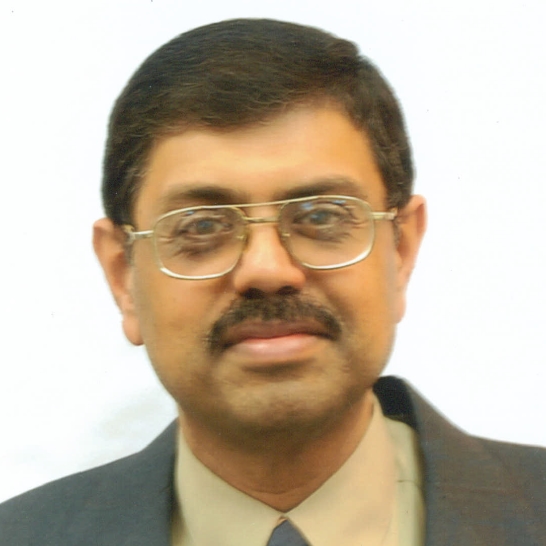
Professor Krishnaswami Alladi, University of Florida, USA

Professor Krishnaswami Alladi, University of Florida, USAKrishnaswami Alladi is professor of mathematics at the University of Florida, where he was department chairman from 1998-2008. He received his PhD from UCLA in 1978. His area of research is number theory - especially analytic number theory and the theory of partitions and q-hypergeometric series. He is the Founder and Editor-in-Chief of The Ramanujan Journal, devoted to all areas of mathematics influenced by Ramanujan, and published by Springer. He helped create the SASTRA Ramanujan Prize given to very young mathematicians for outstanding contributions to areas influenced by Ramanujan, and has chaired the prize committee since its inception in 2005. |
|
| 11:35 - 11:50 | Discussion | |
| 11:50 - 12:20 |
Circle method
Hardy and Ramanujan’s introduction of the circle method in 1916 as a means of analysing the behaviour of the partition function led very rapidly to pivotal work of Hardy and Littlewood, and later, of Vinogradov, concerning Waring’s problem and the Goldbach problem. Now, a century later, applications of the circle method are legion across analytic number theory, quantitative arithmetic geometry, the theory of Diophantine approximation, discrete harmonic analysis, and beyond. With the exception of work concerning problems that might be characterised as dominated by linear behaviour, conclusions have usually remained far from the sharpest conjectured to hold.
The speaker will describe recent progress on non-linear problems that attains the sharpest bounds conjectured to hold, focusing on the resolution of the main conjecture in Vinogradov’s mean value theorem. The latter and its relatives provide key input into the sharpest estimates available in Waring’s problem concerning sums of powers, the zero-free region for the Riemann zeta function, the existence of rational points on varieties of large dimension over number fields, and so on. Progress on these problems, and its absence, will be described so as to highlight recent success, and the formidable challenges that remain. 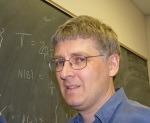
Professor Trevor Wooley FRS, University of Bristol, UK

Professor Trevor Wooley FRS, University of Bristol, UKTrevor D.Wooley gained his PhD from Imperial College in 1990, He was faculty member of the University of Michigan, Ann Arbor, 1991 - 2007 (serving as Chair 2002-2005), and has been based at the University of Bristol from 2007 - present. His research is centred on the Hardy-Littlewood (circle) method, a method based on the use of Fourier series that delivers asymptotic formulae for counting functions associated with arithmetic problems. In the 21st Century, this method has become immersed in a turbulent mix of ideas on the interface of Diophantine equations and inequalities, arithmetic geometry, harmonic analysis and ergodic theory, and arithmetic combinatorics. Wooley has been awarded the Salem Prize (1998), Frohlich Prize (2012), elected FRS (2007) and FAMS (2012). He was a 45-minute speaker at ICM in Beijing (2002) and Seoul (2014). |
|
| 12:20 - 12:35 | Discussion |
Chair

Professor George E Andrews, Pennsylvania State University, USA

Professor George E Andrews, Pennsylvania State University, USA
George E. Andrews was born in Salem, Oregon. He received his B.S. and M.A. degrees from Oregon State University, and his Ph.D. from the University of Pennsylvania. Andrews is Evan Pugh University Professor in Mathematics at the Pennsylvania State University. An expert on q-series, he has written and published more than 300 papers and has just completed (jointly with Bruce Berndt) the fifth and final volume explicating Ramanujan's Lost Notebook. Andrews was elected to the American Academy of Arts and Sciences in 1997, and to the National Academy of Sciences (USA) in 2003. He was awarded an honorary professorship at Nankai University in 2008. In 2009 he became a SIAM Fellow. He holds honorary degrees from Parma, Florida, Waterloo, Illinois and SASTRA University (India). Andrews served as President of the American Mathematical Society from February 1, 2009 to January 31, 2011, and became a Fellow of the AMS in 2012
| 13:30 - 14:00 |
Srinivasa Ramanujan and signal-processing problems
In 1918, Srinivasa Ramanujan introduced a summation, known today as the Ramanujan-sum. He used this to express several arithmetic functions in the form of infinite series. For many years this sum was used by other mathematicians to prove important results in number theory. In recent years, engineers and physicists have found applications of this sum in digital signal processing, especially in identifying periodic components of signals with integer periods. This has also led to generalization of the Ramanujan-sum decomposition in several directions, opening up new theory as well as applications in the representation and identification of periodic signals. Key to these developments is the so-called Ramanujan subspace which is a space containing a specific class of integer-periodic functions. These subspaces turn out to be fundamental in the representation of arbitrary periodic sequences. The new developments include Ramanujan dictionaries for sparse representation of periodic signals, Farey dictionaries for the same, and Ramanujan filter banks for tracking periodicity as it evolves and changes in time. The well known subspace algorithm for parameter identification called the multiple signal classification (MUSIC) algorithm has also been generalized to obtain the so-called iMUSIC algorithm for integer periodicities. The results have applications in the study of periodic signals with inherently integer periods, such as segments of DNA and protein sequences among others. This talk gives an overview of the theory and outlines some of these applications. 
Professor P P Vaidyanathan, California Institute of Technology, USA

Professor P P Vaidyanathan, California Institute of Technology, USAP. P. Vaidyanathan is the Kiyo and Eiko Tomiyasu Professor of Electrical Engineering at the California Institute of Technology. He received the B.Tech. and M.Tech. degrees from the University of Calcutta, India, and the Ph.D degree in Electrical and Computer Engineering from the University of California, Santa Barbara. He has authored over 500 papers and four books in the signal processing area, and has received prizes for excellence in teaching at Caltech multiple times. He is a Fellow of the IEEE, recipient of the F. E. Terman Award of the American Society for Engineering Education, and past distinguished lecturer for the IEEE Signal Processing Society. He has received the IEEE Signal Processing Society's Technical Achievement Award (2002), Education Award (2012), and Society Award (2016), and the 2016 IEEE Gustav Robert Kirchhoff Award (a Technical Field award) for ``fundamental contributions to digital signal processing |
|
|---|---|---|
| 14:00 - 14:15 | Discussion | |
| 14:15 - 14:45 |
From Ramanujan graphs to Ramanujan complexes
Ramanujan graphs are k-regular graphs with all non trivial eigenvalues are bounded (in absolute value) by 2SR(k-1). They are optimal expanders (from spectral point of view). Explicit constructions of such graphs were given in the 80's as quotients of the Bruhat-Tits tree associated with GL(2) over a local field F, by the action of suitable congruence subgroups of arithmetic groups. The spectral bound was proved using works of Hecke, Deligne and Drinfeld on the 'Ramanujan conjecture' in the theory of automorphic forms. The work of Lafforgue, extending Drinfeld from GL(2) to GL(n), opened the door for the construction of Ramanujan complexes as quotients of the Bruhat-Tits buildings associated with GL(n) over F. This way one gets finite simplical complxes which on one hand are 'random like' and at the same time have strong symmetries. These seemingly contradicting properties make them very useful for constructions of various external objects. Recently various applications have been found in combinatorics, coding theory and in relation to Gromov's overlapping properties. The last application is probably the most suprising one, showing that there exist d-dimensional BOUNDED DEGREE simplical complexes X with the following remarkable property: for every continuous map from X to the d-dimensional Euclidean space, there is a point which is covered by a fixed fraction of the d-dimensional faces of X. 
Professor Alex Lubotzky, Hebrew University, Israel

Professor Alex Lubotzky, Hebrew University, IsraelProfessor Alex Lubotzky is the Weil Professor of Mathematics at the Einstein Institute of the Hebrew University. He has authored 4 books and over 130 research papers. His name appears on the ISI list of the most cited scientists in the world. He has been a visiting professor at Stanford, Columbia, the University of Chicago, Yale, NYU, ETH and the Institute for Advanced Study at Princeton. Lubotzky received a number of Israeli and international prizes, including the Israel prize 2018. He is an Honorary Foreign Member of the American Academy of Arts and Sciences, and of the Israel Academy of Science. In 2006 he received an honorary degree from the University of Chicago for his contributions to modern mathematics. From 1996 - 1999 he served as a member of the Israeli Knesset. |
|
| 14:45 - 15:00 | Discussion | |
| 15:00 - 15:30 | Coffee | |
| 15:30 - 16:00 |
Optimal point configurations and Fourier interpolation formulas
The sphere packing problem asks for the densest configuration of non-intersecting open unit balls at the Euclidean space. This classical geometric problem is solved only in dimensions 1, 2, 3, 8, and 24. In this talk, Professor Viazovska will present a solution of the sphere packing problem in dimensions 8 and 24. It seems that each dimension has its own features and requires a different approach. One method of estimating the density of a sphere packing from above was suggested by H Cohn and N Elkies in 2003. Their approach is based on Fourier optimization. Namely, they showed that the existence of a function satisfying certain inequalities for the function itself and for its Fourier transform leads to an upper bound of the density of a sphere packing. Using this method Cohn and Elkies were able to prove almost sharp bounds in dimensions 8 and 24. Professor Viazovska will show that functions providing exact bounds can be constructed explicitly. Moreover, Professor Viazovska will present a new type of Fourier interpolation formula. 
Professor Maryna Viazovska, Ecole Polytechnique Federale de Lausanne, Switzerland

Professor Maryna Viazovska, Ecole Polytechnique Federale de Lausanne, SwitzerlandMaryna Viazovska was born in Kiev in Ukraine in 1984. She obtained her Bachelor degree in Mathematics in 2005 from Kiev National University and a Master's degree in 2007 from the University of Kaiserslautern. In 2013 she received her PhD from the University of Bonn. After a postdoctoral position at the Humboldt University in Berlin she joined the faculty of the École Polytechnique Fédérale Lausanne, where she became full professor in 2018. |
|
| 16:00 - 16:15 | Discussion | |
| 16:15 - 16:45 |
Ramanujan conjecture, Ramanujan graphs and Ramanujan complexes
The purpose of this talk is to give a panorama of the three topics in the title carrying Ramanujan's name. In 1916 Ramanujan predicted that the pth Fourier coeffcient of the weight 12 discriminant function is bounded by 2p11/2 for all primes p. This conjecture is now proved for classical holomorphic cuspidal Hecke eigenforms by the work of Eichler-Shimura, Deligne, and Deligne-Serre. After the connection between the classical modular forms and representations of GL(2) over Q was understood, the Ramanujan conjecture is expected to hold in great generality, revealing deep arithmetic properties of automorphic forms. In particular, it is established for automorphic cuspidal representations of GL(n) over global function fields by Drinfeld and L La orgue. The Bruhat-Tits building attached to PGL(n + 1) over a p-adic field F is an n-dimensional simplicial complex on which PGL(n+1, F) acts. The orbit space of a discrete cocompact subgroup Γ of PGL(n+1, F) is a finite n-dimensional simplicial complex XΓ. The validity of the Ramanujan conjecture is used to select infinitely many such Γ so that the spaces XΓ are spectrally optimal, called Ramanujan graphs (for n = 1) and Ramanujan complexes (for n ≥ 2). There are zeta functions counting closed geodesics in XΓ of given dimension and type. The Ramanujan graphs/complexes are those whose zeta functions satisfy the Riemann Hypothesis. The prime geodesic theorems for XΓ follow from the analytic behaviour of the associated zeta functions, and for Ramanujan graphs/complexes, one also obtains a good error estimate, similar to what happens for prime numbers. 
Professor Wen-Ching Winnie Li, Pennsylvania State University, USA

Professor Wen-Ching Winnie Li, Pennsylvania State University, USAW. Li is a Distinguished Professor of Mathematics at the Pennsylvania State University. Her research focuses on automorphic forms, number theory, and their applications to combinatorics. Her thesis work on the newform theory was cited in Andrew Wiles' proof of Fermat's Last Theorem. She applied results in automorphic forms and number theory to construct efficient communication networks called Ramanujan graphs and Ramanujan complexes. Her work on the arithmetic of modular forms for noncongruence subgroups has revitalized the field. Li earned a B.S. degree at National Taiwan University and a Ph.D. degree from the University of California at Berkeley. Prior to Penn State, she held positions at the University of Illinois at Chicago, the Institute for Advanced Study at Princeton, and Harvard University. She was the Director of Taiwan's National Center for Theoretical Sciences 2009-2014. She received the 2010 Chern Prize in Mathematics and was named a Fellow of the American Mathematical Society in 2013. |
|
| 16:45 - 17:00 | Discussion | |
| 17:15 - 19:15 | The Man Who Knew Infinity film screening |
Chair
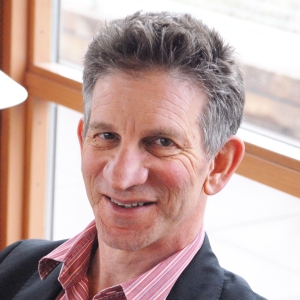
Professor Peter Sarnak, Princeton University, USA

Professor Peter Sarnak, Princeton University, USA
Peter Sarnak is currently the Eugene Huggins Professor of Mathematics at Princeton University and Professor in the School of Mathematics at the Institute for Advanced Study, Princeton. He was born in Johannesburg, South Africa and has a BSc and BSc Honours from the University of Witwatersrand (1971-74, 1975) and a PhD in mathematics from Stanford University (1980, Adviser Paul Cohen). He has held assistant, associate and professor positions at the Courant Institute NYU (1980-83, 1983, 2001-05), associate and professor positions at Stanford University (1083-87, 1987-91), and professor positions at Princeton University (1991-) and the Institute for Advanced Study (2007-). He has made major contributions to number theory, and to questions in analysis motivated by number theory. His interest in mathematics is wide-ranging, and his research focuses on the theory of zeta functions and automorphic forms with applications to number theory, combinatorics, and mathematical physics. In 2014 he was awarded the Wolf Prize in mathematics, and has also received the Frank Nelson Prize in number theory of AMS (2005) and the Polya Prize of SIAM (1998). He is a member of the National Academy of Sciences (2002) and the American Philosophical Society (2008). Additionally, Peter has honorary doctorates from the Hebrew University, Jerusalem (2010), Shandog University, China (2014), the University of Witwatersrand (2014), University of Chicago (2015), University of St Andrews (2016), and King’s College London (2017).
| 09:00 - 09:30 |
The Ramanujan Conjectures
One of the most influential insights by Ramanujan was his conjecture concerning the size of Fourier coefficients of modular forms. These lead naturally to some of the fundamental conjectures in the modern theory of automorphic forms, and the special cases that have been proven (including Ramanujan's original by Deligne) constitute high points of this theory. Professor Sarnak will review these briefly and as well as some number theoretic applications. 
Professor Peter Sarnak, Princeton University, USA

Professor Peter Sarnak, Princeton University, USAPeter Sarnak is currently the Eugene Huggins Professor of Mathematics at Princeton University and Professor in the School of Mathematics at the Institute for Advanced Study, Princeton. He was born in Johannesburg, South Africa and has a BSc and BSc Honours from the University of Witwatersrand (1971-74, 1975) and a PhD in mathematics from Stanford University (1980, Adviser Paul Cohen). He has held assistant, associate and professor positions at the Courant Institute NYU (1980-83, 1983, 2001-05), associate and professor positions at Stanford University (1083-87, 1987-91), and professor positions at Princeton University (1991-) and the Institute for Advanced Study (2007-). He has made major contributions to number theory, and to questions in analysis motivated by number theory. His interest in mathematics is wide-ranging, and his research focuses on the theory of zeta functions and automorphic forms with applications to number theory, combinatorics, and mathematical physics. In 2014 he was awarded the Wolf Prize in mathematics, and has also received the Frank Nelson Prize in number theory of AMS (2005) and the Polya Prize of SIAM (1998). He is a member of the National Academy of Sciences (2002) and the American Philosophical Society (2008). Additionally, Peter has honorary doctorates from the Hebrew University, Jerusalem (2010), Shandog University, China (2014), the University of Witwatersrand (2014), University of Chicago (2015), University of St Andrews (2016), and King’s College London (2017). |
|
|---|---|---|
| 09:30 - 09:45 | Discussion | |
| 09:45 - 10:15 |
Selmer groups and Galois representations
Selmer groups are important objects that are studied in the Iwasawa theory of Galois representations. Considered as modules over the corresponding Iwasawa algebras, they have certain invariants associated to them which provide information on their exact structure. This talk will provide an overview of Selmer groups that arise in the study of Galois representations associated to elliptic curves and modular forms, revisiting some of the classical results as well as exposing new results on their algebraic structure. 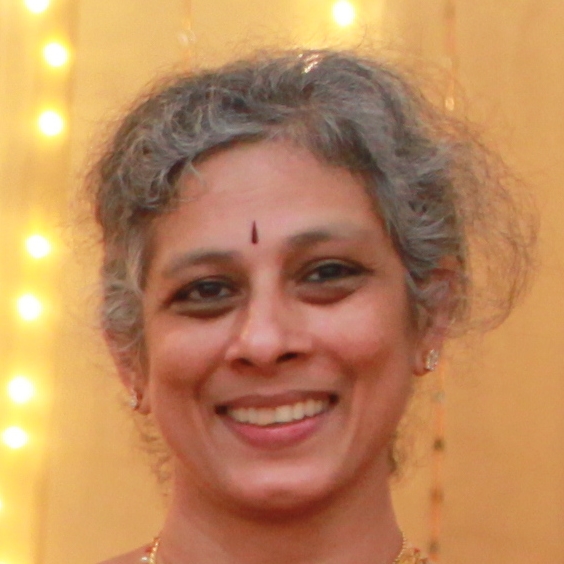
Professor Sujatha Ramdorai, University of British Columbia, Canada

Professor Sujatha Ramdorai, University of British Columbia, CanadaSujatha Ramdorai is an Indian Mathematician who was at the Tata Institute of fundamental Research, Bombay before moving to University of British Columbia in 2011 where she currently holds a Canada Research Chair. She works in Algebra and Number Theory and was the recipient of the ICTP Ramanujan Prize in 2006. She is also passionate about making Math Education accessible to all and established the Ramanujan Math Park in India. She has also worked on policy issues related to education, research and international collaborations. |
|
| 10:15 - 10:30 | Discussion | |
| 10:30 - 11:00 | Coffee | |
| 11:00 - 11:30 |
Mock modular and quantum modular forms
Ramanujan’s last letter to Hardy surrounds his mock theta functions, certain curious q-hypergeometric series. In the decades following his death in 1920, while the mock theta functions were of great importance and interest, it was unclear how exactly they fit into the theory of modular forms – Dyson called this “a challenge for the future” at the 1987 Ramanujan Centenary Conference. Zwegers finally recognised that Ramanujan had discovered glimpses of special families of nonholomorphic modular forms, which we now know to be harmonic Maass forms, as defined by Bruinier and Funke in 2004. Studying Ramanujan’s mock theta functions within the modern context of harmonic Maass forms, and their holomorphic parts called mock modular forms, has resulted in their deeper understanding, and a great deal of research activity and applications; however, as of a few years ago, a fundamental question remained. In his last letter, Ramanujan claimed that as q approaches any even-ordered root of unity radially from within the unit disk, either the sum or difference between his mock theta function f(q) and a modular form b(q) is bounded. The author, together with Ono and Rhoades, revisited this claim, which led to a fascinating connection between mock theta functions and quantum modular forms, which were not defined until 2010 by Zagier, 90 years after Ramanujan’s death. In this talk, Professor Folsom will bring together past and present, and study the relationship between mock modular forms and quantum modular forms, with Ramanujan’s mock theta functions as motivation. In particular, she will discuss related work of Bringmann-Rolen, Choi-Lim-Rhoades, Griffin-Ono-Rolen, and others. 
Professor Amanda Folsom, Amherst College, USA

Professor Amanda Folsom, Amherst College, USAAmanda Folsom is an Associate Professor of Mathematics at Amherst College. She has also held positions at Yale University and the University of Wisconsin-Madison, and has been a visiting scientist at the Max Planck Institute for Mathematics in Bonn, and a member of the Institute for Advanced Study, Princeton. Her BA is from the University of Chicago, and her PhD from UCLA, both in mathematics. Folsom's research interests in number theory include modular forms, harmonic Maass forms and mock modular forms, Ramanujan's mock theta functions, Jacobi forms, quantum modular forms, modular units, q-series, and applications to combinatorics and the theory of partitions. She has authored or co-authored ~45 scholarly articles, as well as one book, titled “Harmonic Maass forms and mock modular forms: theory and applications.” Folsom is currently grateful for the support of a National Science Foundation Career Grant for research and mentoring, and is a 2018-19 Simons Foundation Fellow in Mathematics. |
|
| 11:30 - 11:45 | Discussion | |
| 11:45 - 12:15 |
Ramanujan and the anatomy of integers
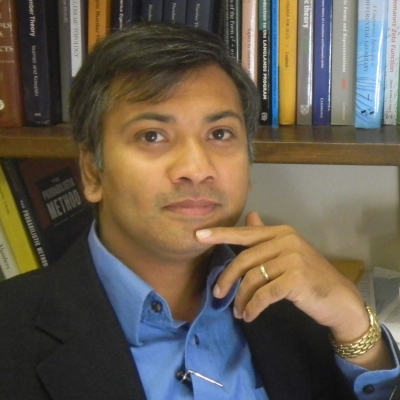
Professor K Soundararajan, Stanford University, USA

Professor K Soundararajan, Stanford University, USASoundararajan is Professor of Mathematics at Stanford University. His research interests are in number theory, analysis, probability, and combinatorics. |
|
| 12:15 - 12:30 | Discussion |
Chair
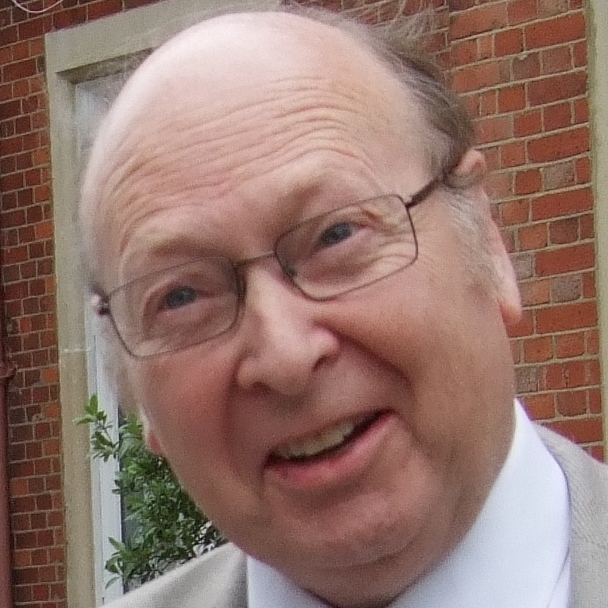
Professor Robert C Vaughan FRS, Pennsylvania State University, USA

Professor Robert C Vaughan FRS, Pennsylvania State University, USA
Robert Vaughan has made a number of seminal contributions to the additive theory of numbers, including his demonstration of the asymptotic formula for the eight cubes problem, the proof of which had eluded many eminent predecessors. He discovered an important identity — now known as Vaughan’s identity — that has been very influential in recent number theory, and which played a substantial role in the recent elucidation of the Kummer conjecture by David Heath-Brown and Samuel Patterson. Robert is also well known for his fundamental work in multiplicative number theory done either alone or in collaboration with Hugh Montgomery, including a recent proof of a long-standing conjecture due to Erdos concerning the distribution of numbers relatively prime to a given large number, n. He was awarded the Junior Berwick Prize of the London Mathematical Society in 1979.
| 13:30 - 14:00 |
Ramanujan’s influence on string theory, black holes and moonshine
Many problems in string theory involve counting certain kinds of quantum states of strings or black holes. These counting problems can be recast in terms of the coefficients of modular forms that were central to the work of Ramanujan. The Hardy-Ramanujan asymptotic estimates for the growth of these coefficients are turned in physical problems into statements about a limiting temperature in string theory or the entropy of black holes. More recently the mock modular forms studied by Ramanujan in the last year of his life have also appeared in string theory through the study of K3 surfaces. In particular this has led to the new 'moonshine' phenomenon that link Ramanujan’s mock modular forms to the representation theory of certain finite groups, in particular the sporadic Mathieu group M24. Professor Harvey will survey these connections between Ramanujan’s work and aspects of string theory with a particular emphasis on the new moonshine phenomena linking K3 and M24 and its generalization to umbral moonshine. 
Professor Jeff Harvey, University of Chicago, USA

Professor Jeff Harvey, University of Chicago, USAJeffrey Harvey is the Enrico Fermi Distinguished Service Professor and a member of the Physics Department and the Enrico Fermi Institute of the University of Chicago. He received undergraduate degrees in mathematics and physics from the University of Minnesota, a Ph.D from Caltech in 1981 and was a postdoc and faculty member at Princeton University before moving to the University of Chicago in 1989. His research interests and accomplishments cover a broad spectrum of topics in particle theory, cosmology, mathematical physics, and string theory. He was chair of the University of Chicago physics department from 2001-2004. He is a fellow of the American Physical Society and the American Academy of Arts and Sciences and a member of the National Academy of Sciences. |
|
|---|---|---|
| 14:00 - 14:15 | Discussion | |
| 14:15 - 14:45 |
Ramanujan and recent work on the Riemann hypothesis
Ramanujan and Hardy famously developed the "circle method" to approximate the values of the partition function. This work has been generalized and fully developed with a wide array of applications in the world of modular forms (e.g. string theory, moonshine, topological invariants, to name a few). The speaker will describe how the implementation of the circle method to a conjecture on partitions led to a general theorem about the hyperbolicity of real polynomials. This general theorem includes results on the Polya-Jensen criterion for the Riemann Hypothesis. This lecture represents joint work with Michael Griffin, Larry Rolen, and Don Zagier. 
Professor Ken Ono, Emory University, USA

Professor Ken Ono, Emory University, USAOno is the Asa Griggs Candler Professor of Mathematics at Emory University and Vice President of the American Mathematical Society. His contributions include several monographs and more than 160 research and popular articles in number theory, combinatorics and algebra. He earned his Ph.D. from UCLA and has received many awards for his research, including a Guggenheim Fellowship, a Packard Fellowship and a Sloan Research Fellowship. He was awarded a Presidential Early Career Award for Science and Engineering (PECASE) by Bill Clinton in 2000 and was named a Distinguished Teaching Scholar by the National Science Foundation in 2005. He is also a member of the US National Committee for Mathematics and the National Academy of Sciences. He was also an Associate Producer of the film “The Man Who Knew Infinity”, the Hollywood biopic about Srinivasa Ramanujan which starred Jeremy Irons and Dev Patel. |
|
| 14:45 - 15:00 | Discussion | |
| 15:00 - 15:30 | Coffee | |
| 15:30 - 16:00 |
Mock modular forms are everywhere
One of the most important legacies of Ramanujan is the introduction of mock theta functions. Nearly a century later, we have understood that they have the following three key properties: 'nice' Fourier coefficients, radial limits, and shadows. First, a conspicuous property of the q-series Ramanujan wrote down is that they have integral coefficients. Second, the original characterisation of the mock theta functions, given by Ramanujan himself, concerns their behaviour near roots of unity. Third, after a long quest, a modern definition of mock modular forms was found in the first decade of the millenium. This definition states that, upon adding a non-holomorphic modular correction dictated by the 'shadow' function, the mock modular form becomes a harmonic Maass form transforming just like an ordinary modular form. Not even two decades after the modern definition was discovered, mock modular forms have already found a wide range of applications in various fields in mathematics and theoretical physics. In this talk, Professor Cheng will mention moonshine, stringy black holes, and three-dimensional topology. Quite evidently, the Fourier coefficients and to a lesser degree the shadows of the mock modular forms play an important role in the context of moonshine and black holes. Professor Cheng will explain how all three properties of mock modular forms, in particular their connection to quantum modular forms, are crucial for applications in three-dimensional topology. 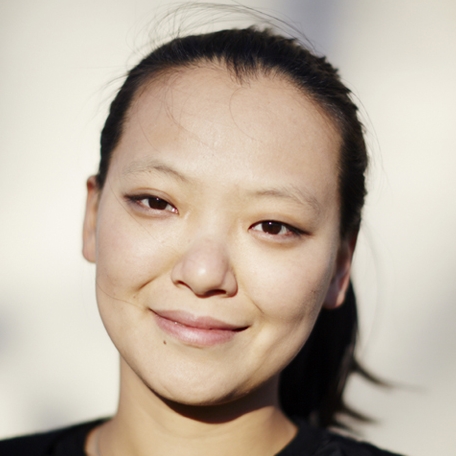
Professor C. N. Cheng, University of Amsterdam, Netherlands

Professor C. N. Cheng, University of Amsterdam, NetherlandsMiranda Cheng is a researcher active in the field of string theory, focusing on the interplay between mathematics and string theory. In recent years, her main research interest is moonshine phenomenon. She received her PhD in theoretical physics in 2008, under the supervision of Erik Verline in the University of Amsterdam. After her postdoc positions in the physics and math departments of Harvard University, she joined CNRS in 2012, affiliated with L'institut de mathématiques de Jussieu in Paris. Since 2014 she is back in Amsterdam as a faculty member, affiliated with the Korteweg-de Vries Institute of Mathematics and with the Institute of Physics. |
|
| 16:00 - 16:15 | Discussion |

